Strawberry Delight |
|||||||||||||||||||
|
|
|||||||||||||||||||
Crocheted poncho-jumper with lace pattern. Sizes S - XXXL. The piece is worked top down in DROPS Belle.
DROPS 190-9 |
|||||||||||||||||||
|
INFORMATION FOR THE PATTERN: PATTERN: See diagrams A.1 to A.5. CROCHET INFO: At the beginning of each round of treble crochets, replace the first treble crochet with 3 chain stitches. The round ends with 1 slip stitch in the chain stitch at the beginning of the round. Diagram A.1 shows how each round starts and diagram A.4 shows how each round ends; the slip stitch is worked in the 3rd chain stitch at the beginning of the round, the 3 chain stitches replace alternately the first and last treble crochet on the round. STRIPES: ROUND 1: Work with old pink – read COLOUR CHANGE! ROUND 2: Work with light beige Repeat rounds 1 and 2 a total of 3 times. ROUNDS 7 and 8: Work with old pink ROUNDS 9 and 10: Work with light beige Then work as follows: Work 3 rounds with old pink, 3 rounds with light beige. Work 4 rounds with old pink, 4 rounds with light beige. Continue like this, i.e. work 1 more round of each colour to finished length. When the gap between each stripe gets too long, cut and fasten the strand. COLOUR CHANGE: To get a neat transition when changing colours, work the last slip stitch on the round with the new colour as follows: Insert the hook in the last chain stitch from the beginning of the round, pick up the new strand, make a yarn over with the new colour and pull it through the loop on the hook. DECREASE TIP (for sleeves): Adjust so that decreases are worked on either round 1 or round 3 in A.2a. Decrease 1 treble crochet group by skipping the first chain stitch in the first repeat of A.2a. The next round is worked as before, but now there is no treble crochet group worked between the 2 treble crochet groups where you skipped a chain stitch (= 1 treble crochet group decreased). The next time you decrease, skip the last chain stitch in the last repeat of A.2a. The next round is worked as before, but there is no treble crochet group worked between the 2 treble crochet groups where you skipped a chain stitch (= 1 treble crochet group decreased). Decrease like this upwards, i.e. decrease alternately at the beginning and end of round. ---------------------------------------------------------- PONCHO JUMPER: The piece is worked in the round, top down. You increase mid front and back and in the middle of each sleeve. The piece is divided for the sleeves and body; the body is continued in the round with increases mid back and front as before. The sleeves are worked in the round to finish. YOKE: Work 107-107-125-125 chain stitches with hook size 4.5 mm and old pink and form them into a ring with 1 slip stitch in the first chain stitch. ROUND 1(worked with old pink): Work 3 chain stitches (= 1 treble crochet) in the first chain stitch – read CROCHET INFO, work 1 treble crochet in each of the next 1-1-5-5 chain stitches, * skip 1 chain stitch, 1 treble crochet in each of the next 6 chain stitches *, repeat from *-*, and finish with 1 slip stitch in the 3rd chain stitch at the beginning of the round = 92-92-108-108 treble crochets. ROUND 2 (worked with old pink – equivalent to the first round in A.1 to A.5 marked with a star): (the round starts in the transition between the sleeve and the back piece) Work * 1 treble crochet in each of the next 38-38-46-46 treble crochets (= back/front piece), work 2 treble crochets in each of the next 8 treble crochets (= 8 treble crochets increased) *, work from *-* 1 more time = 108-108-124-124 treble crochets. Continue by working STRIPES – see description above, as follows: ROUND 3 (equivalent to round 1 in the stripes and round 2 in A.1 to A.5): Work A.1 over the first 4 treble crochets, A.2 over the next 12 treble crochets (= 3 times in width), work A.3 over the next 3 treble crochets (= tip mid back), * A.2 over the next 24-24-28-28 treble crochets (= 6-6-7-7 times in width), A.5 over the next 3 treble crochets (= mid top of shoulder) *, A.2 over the next 24-24-28-28 treble crochets (= 6-6-7-7 times in width), A.3 over the next 3 treble crochets (= tip mid front), work from *-* 1 more time, work A.2 over the next 4-4-8-8 treble crochets and finish with A.4 over the last 4 treble crochets = 32-32-36-36 chain spaces with 1 double crochet between each. Continue the pattern like this; when A.1 to A.5 have been worked 1 time in height (i.e a total of 5 rounds have been worked) there is 44-44-48-48 treble crochets on last round.Repeat A.1a to A.5a. REMEMBER THE CROCHET TENSION! Increase 1 treble crochet group in each A.3a on each round. Increase 1 treble crochet group every 3rd round in each A.5a. For every 3rd round worked you increase a total of 8 treble crochet groups and the increased stitches are worked into A.2a as you go. Continue like this until you have worked 20-23-26-29 rounds of treble crochet groups in A.1a to A.5a in height. There are now 84-92-104-112 treble crochet groups/chain stitches on the round. The piece measures approx. 24-28-31-34 cm. The piece is now divided for the body and sleeves. BODY: Cut the strand. Count 14-16-18-20 chain stitches from the middle, seen from the right side, from mid back and out to the side/shoulder (without the chain stitch mid back), work 1 slip stitch around the 14th-16th-18th-20th chain stitch, work round 2 of A.1a (= 3 chain stitches, work 2 treble crochets around the same chain stitch), work 6 chain stitches (= under the sleeve), skip 13-13-15-15 chain stitches and 14-14-16-16 treble crochet groups (= sleeve), around the next chain stitch work A.2a onwards as before, work A.2a and A.3a as before until you have worked around 14-16-18-20 chain stitches past the middle chain stitch in front, work 6 chain stitches (= under the sleeve), skip 13-13-15-15 chain stitches and 14-14-16-16 treble crochet groups (= sleeve), work A.2a and A.3a as before until there is 1 chain stitch left, finish with round 2 of A.4a around the same space as the slip stitch at the beginning of the round = a total of 60-68-76-84 treble crochet groups (including the treble crochet group mid front and mid back) and 6 chain stitches under each sleeve. The next round is worked as follows: Work A.1a around the 6 chain stitches under the sleeve, continue with A.2a and A.3a as before as far as the 6 chain stitches under the other sleeve, work A.2a around the 6 chain stitches under the sleeve 1 time, then work pattern as before to end of round. In other words continue to increase mid front and back with A.3a; the rounds start with A.1a and finish with A.4a and the remaining stitches are worked as A.2a. Continue like this until the piece measures approx. 89-91-93-95 cm, measured from the shoulder and down to the tip in front of piece. Cut and fasten the strands. SLEEVE: The sleeves are worked in the round with light beige. Start in the first chain stitch which was skipped when the sleeve and body were divided, work 1 slip stitch around this chain stitch, work round 2 of A.1a (= 3 chain stitches, work 2 treble crochets around the same chain stitch), work A.2a in each of the 12-12-14-14 chain stitches/13-13-15-15 treble crochet groups which were skipped, work 6 chain stitches mid under sleeve and finish with 1 slip stitch in the 3rd chain stitch at the beginning of the round. Continue with A.1a and A.2a on the next round, then finish with one repeat of A.2a and A.4a around the 6 chain stitches worked under the sleeve = 14-14-16-16 repeats of A.1a/A.2a/A.4a. Continue this pattern. When the piece measures 3 cm decrease 1 treble crochet group under the sleeve after A.1/ before A.4 – read DECREASE TIP! Decrease like this every 3-3-2-2 cm a total of 3 times = 11-11-13-13 treble crochet groups. Cut and fasten the strand when the sleeve measures 20-18-14-11 cm from the division of body/sleeve. Work the other sleeve in the same way. ASSEMBLY: Sew the opening under the sleeves. |
|||||||||||||||||||
Diagram explanations |
|||||||||||||||||||
|
|||||||||||||||||||
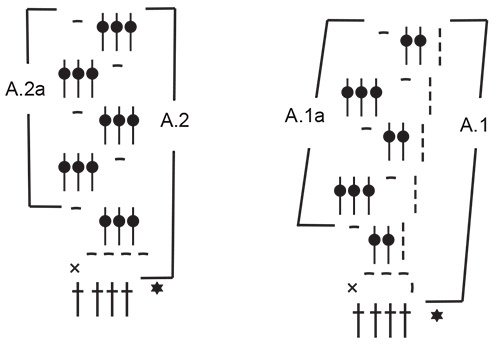
|
|||||||||||||||||||
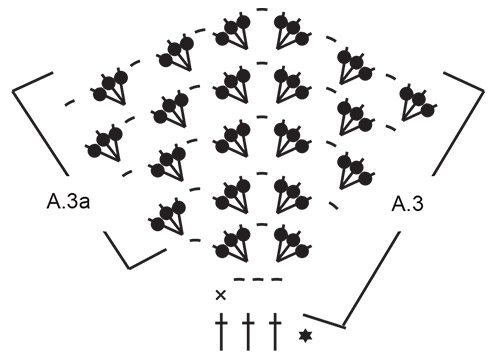
|
|||||||||||||||||||

|
|||||||||||||||||||
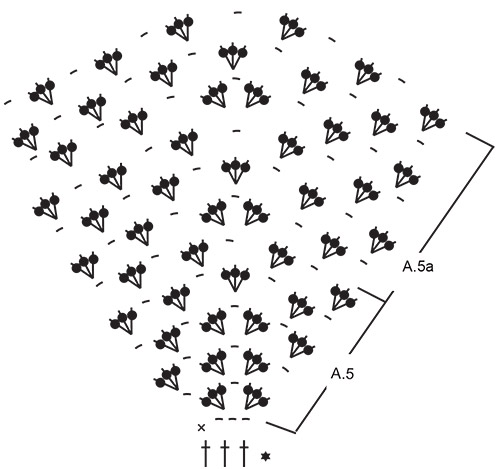
|
|||||||||||||||||||
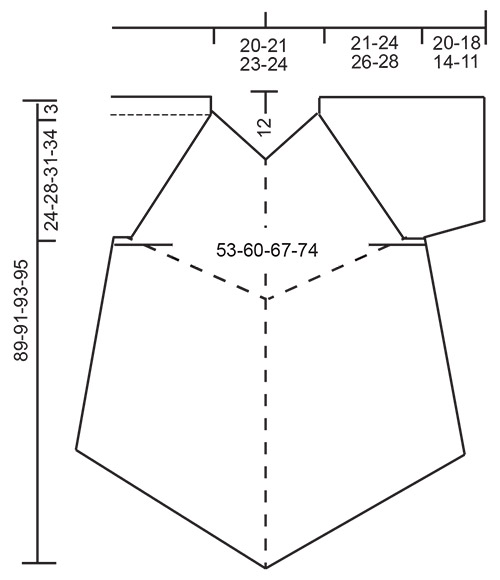
|
|||||||||||||||||||
|
Have you made this or any other of our designs? Tag your pictures in social media with #dropsdesign so we can see them! Do you need help with this pattern?You'll find tutorial videos, a Comments/Questions area and more by visiting the pattern on garnstudio.com. © 1982-2024 DROPS Design A/S. We reserve all rights. This document, including all its sub-sections, has copyrights. Read more about what you can do with our patterns at the bottom of each pattern on our site. |
|||||||||||||||||||





















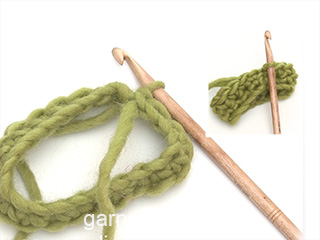

















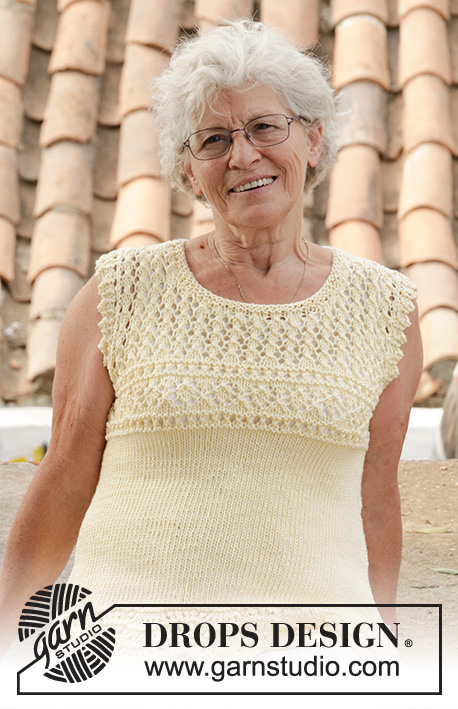







Comments / Questions (47)
Bonjour, est-ce possible de faire ce modèle sans faire de manche? la quantité de laine pour M est bien 400g? Merci, France
16.09.2020 - 19:09DROPS Design answered:
Bonjour France, comme ce modèle se crochète de haut en bas, vous pourrez arrêter les manches au niveau de la division, à la fin de l'empiècement - pour le modèle présenté, il faut 400 g DROPS Belle dans chacune des 2 couleurs (soit 800 g au total). Bon crochet!
17.09.2020 - 10:34Hey jeg forstår ikke omgang 3 vil du prøve a uddybe det lidt bedre for mig
18.08.2020 - 11:58DROPS Design answered:
Hej Sanne, mener du der hvor du skal starte med at lave grupper á 3 stangmasker med 1 lm imellem hver gruppe? Første gang hækler du 3st i hver lm-bue, 1 lm og 3 st i næste lm-bue. På næste række hækler du de 3 st i den ene lm som er mellem grupperne i forrige række. God fornøjelse!
20.08.2020 - 12:29Varv 3, är det luftmaskbågar, som ska göras, och hur många maskor ska jag hoppa över?
25.07.2020 - 09:34DROPS Design answered:
Hej Anette, Mener du varv 2 ifølge A.1, så hækler du 4lm, hopper over 3 st og hækler 1 fm i 4. st. Nu hækler du 3lm, 1 fm i 4.st osv. God fornøjelse!
30.07.2020 - 15:46Jeg kan simpelthen ikke forstå, at der ikke skal tages ind i siden. Den bliver jo så bred. I modellen 213-35 tages der 2 stangmaster ind i hver side i hver omgang samtidig med at der tages ud midt for og midt bag.
25.06.2020 - 18:43Hej. Bør der ikke tages ind under ærmet? Blusen bliver meget bred. Den ser ikke ud som tegningen nederst i opskriften.
22.06.2020 - 18:39DROPS Design answered:
Hej Merete, jo du tager ind under ærmerne. Men ikke i siden på blusen, her tager du ud midt foran og midt bagpå. Føler du at den bliver for stor, så kan du tage færre antal masker ud foran og bagpå :)
25.06.2020 - 09:04Ik heb moeite met het haken van het lijf. Ik snap niet hoe ik moet beginnen en een opening houd voor de mouwen
13.05.2020 - 18:30DROPS Design answered:
Dag Kristel,
Vanaf de punt midden achter tel je het aantal aangegeven steken uit richting de zijkant en daar hecht je de draad weer aan met 1 halve vaste. Dan haak je volgens de instructie richting de zijnaad. Op een gegeven moment haak je 6 lossen en sla je een aantal steken over (zoals aagegeven in de beschrijving voor jouw maat) om vervolgens weer verder te haken over het voorpand. Je hebt dan het armsgat gemaakt.
20.05.2020 - 11:09I am having trouble getting the correct size. I needed to go down a hook to get the gauge but the yoke is still too big. I don't understand what the numbers mean on the pattern picture. Inches??? CM.??? Thank you.
27.03.2020 - 17:27DROPS Design answered:
Dear Susan, the numbers on the schematic drawings are in cm-s. Happy Crafting!
29.03.2020 - 22:46Hi, I'm having trouble making a sleeve. Round 1 how many dc groups should I make? And how many sp sts should I skip?
26.10.2019 - 10:20DROPS Design answered:
Dear Setya, on first round on sleeve you should have 14 or 16 times (see size) A.1a/A.2a/A.4a ie 14 or 16 dc-groups + 14 or 16 ch-spaces. Happy crocheting!
04.11.2019 - 11:54Hello, I have trouble to find out, which row in the begining is the one with chain stiches (first line of the diagrams). I work start row chain, then 2 rows of doubles and then? Thank you.
07.09.2019 - 15:01DROPS Design answered:
Dear Zuzana, the chain row is not drawn in diagram, the first row in diagram is the first round worked with treble crochets (= UK-English) after the chain row. When you have worked first row = 92-92-108 treble crochets, now work diagrams = ROUND 2 in text = round with the star in diagram. Happy crocheting!
09.09.2019 - 08:19È molto bello questo modello, ce n'è uno simile aperto davanti? Eventualmente anche con spiegazioni in lingua non italiana. Grazie❣
23.06.2019 - 15:46DROPS Design answered:
Buongiorno Lucia. Purtroppo una versione aperta sul davanti non è prevista. A questo link trova l’elenco dei modelli a poncho disponibili in lingua inglese. Può vedere se ne trova uno che soddisfi le sue esigenze. Se non disponibile in italiano, può chiederne la traduzione. Buon lavoro!
23.06.2019 - 20:50